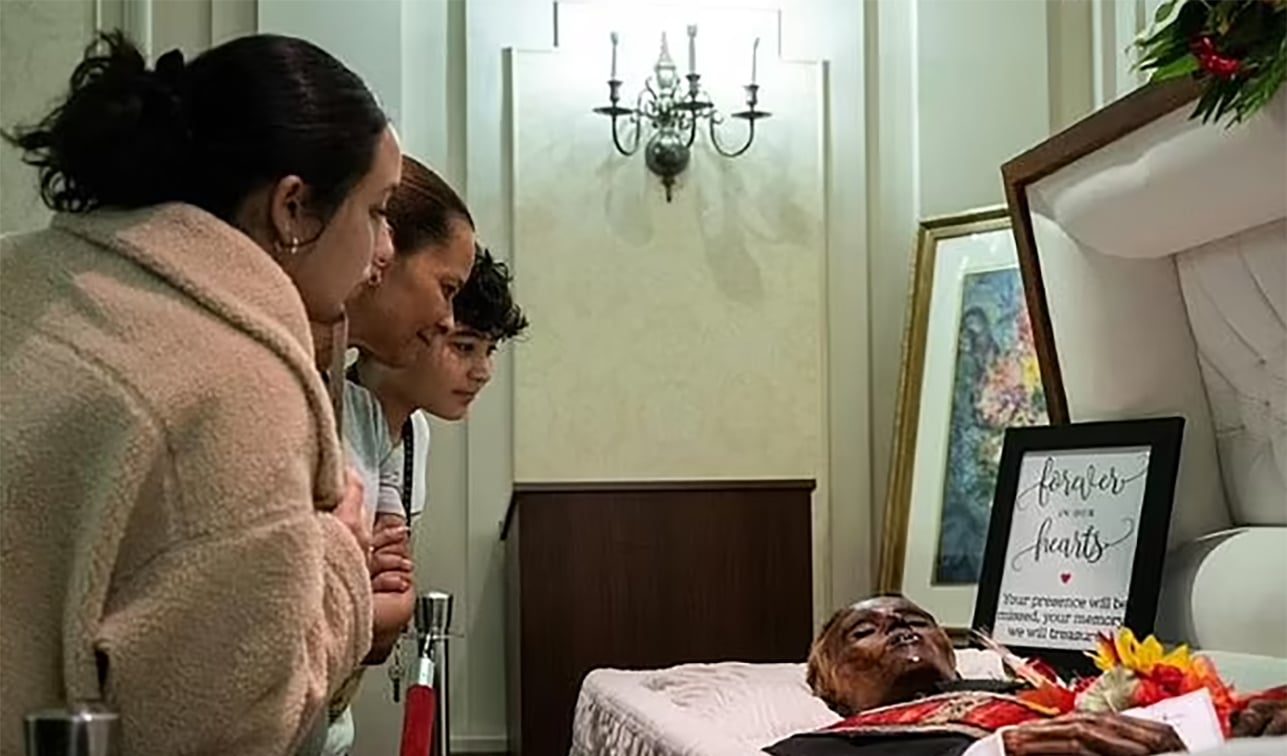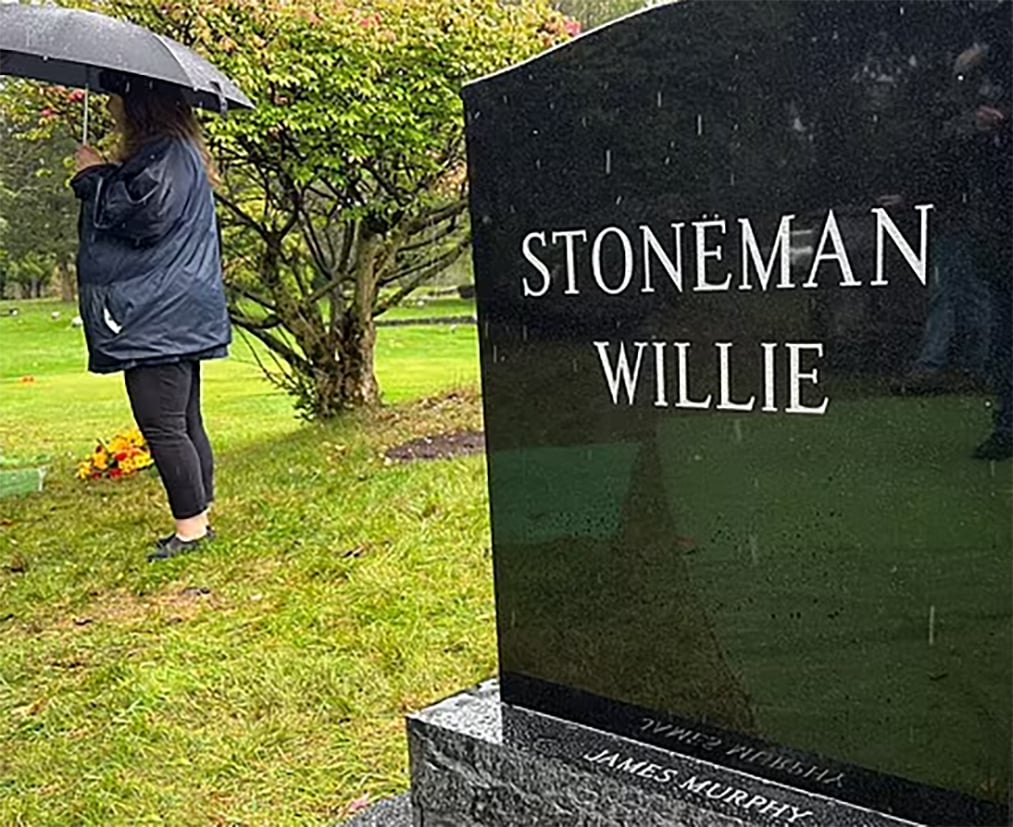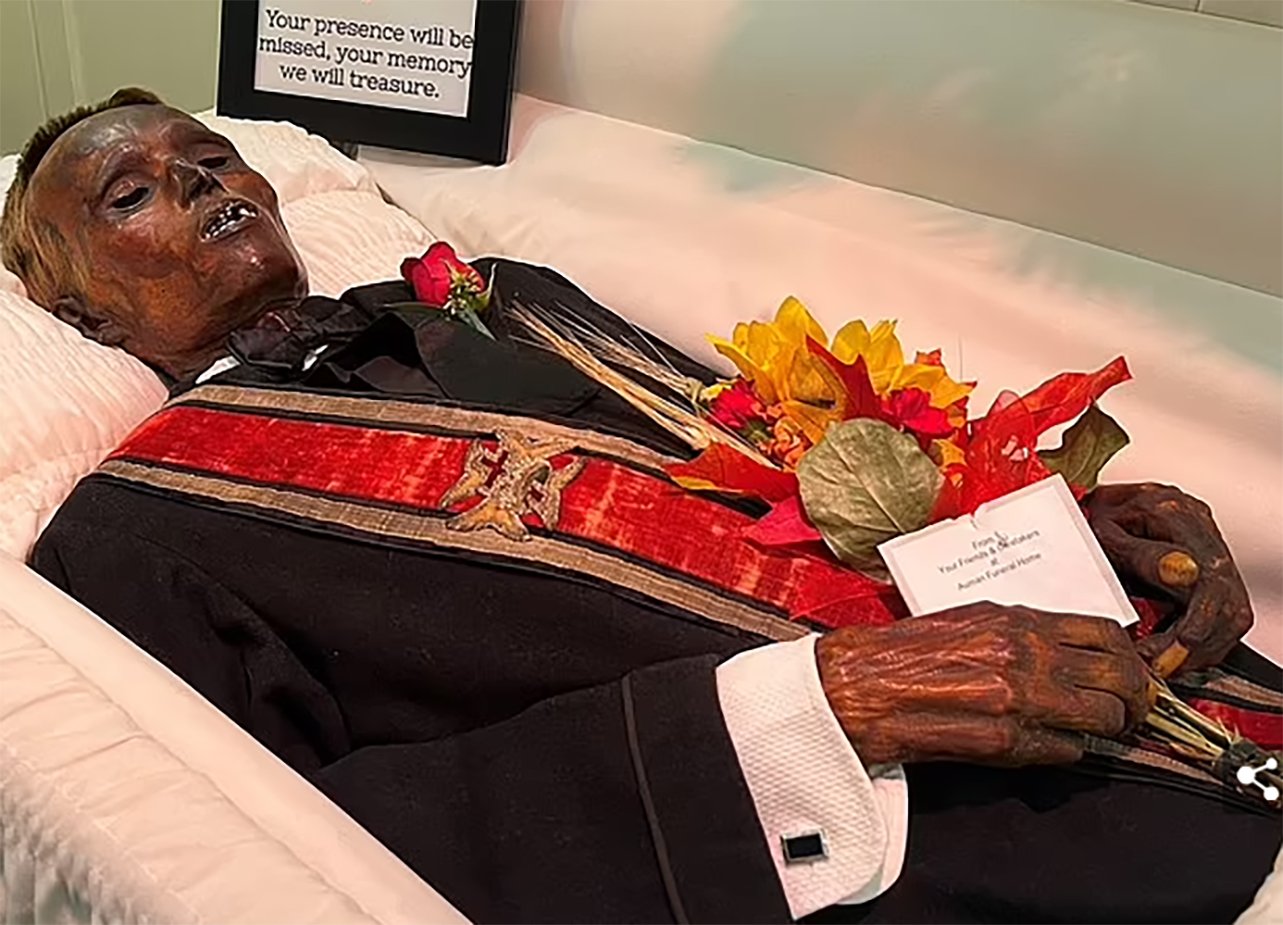Crowds of curious people have begun lining up in recent days to pay their respects, take photos or get a last look at the mummy.

128 years passed quickly and he was almost intact
The man, whose real name is James Murphy but who was known only as Willie because he gave a false name while in prison, was finally revealed at a ceremony on October 7.
"Stoneman Willie" was the long-standing nickname for the thief who died in prison in 1895 and was brought to the Theo C. Auman Funeral Home when no one claimed his body, before being embalmed.
"128 years have gone by fast and he's still here, almost intact," Theo C. Auman Funeral Home Director Kyle Blankenbiller explained before the burial.
The funeral home staff and others chanted in unison, "Rest in peace, James," as they unveiled the headstone with his full name beneath the large words "Stoneman Willie."

The gravestone of James Murphy, the man known to the public as "Stoneman Willie"
The body was kept in an open coffin for most of its time on display at the funeral home until it was loaded into a hearse. Thousands of people, including many local residents, researchers and students, could clearly see his tanned skin and facial features. He was wearing a suit with a bow tie, his hair and teeth still intact, and was placed in a coffin with a red scarf across his chest.
"Willie became a quirky figure in Reading history, becoming our friend," said Blankenbiller.
Kyle Blankenbiller said Murphy was an Irish-born alcoholic who died on November 19, 1895, while in prison in Reading. He died at the age of 37 after battling a number of illnesses: gastritis, acute septicemia, and end-stage renal failure.
According to Willie's roommate, he was arrested for pickpocketing and took on a false name because he didn't want to embarrass his wealthy Irish father.
After his death, local officials could not find relatives so the body was transferred to Theo C. Auman Funeral Home.
"Weeks, months, years passed without anyone claiming the remains," local historian George Meiser said at the ceremony on October 7.
Embalming was still an emerging science at the time. Blankenbiller adds that Theodor Auman, an undertaker, experimented with another method of embalming—a technique that was still relatively new in the late 19th century.

Grandpa Willie's embalmed body in coffin at funeral home
The process involves injecting embalming fluid into the arteries, which displaces the blood, facilitating its expulsion from the veins.
It took local historians some digging to discover Willie's real name through records from the jail, funeral home, and other documents.
The funeral home was given government permission to hold the body instead of burying it to monitor the experimental embalming process.
Among those saying goodbye to the mummy was Michael Klein, a resident of Berks County, Pennsylvania, who was fascinated by the “mystery of this man.” “People come to America to fulfill the American dream. No one comes here to die in an unknown prison,” Klein said.
Source link


![[Photo] Ho Chi Minh City holds funeral for former President Tran Duc Luong](https://vphoto.vietnam.vn/thumb/1200x675/vietnam/resource/IMAGE/2025/5/24/9c1858ebd3d04170b6cef2e6bcb2019e)



![[Photo] Party and State leaders visit former President Tran Duc Luong](https://vphoto.vietnam.vn/thumb/1200x675/vietnam/resource/IMAGE/2025/5/24/960db9b19102400e8df68d5a6caadcf6)


























































































Comment (0)